If you are checking your oil level, it's a good idea to take note of its color. You might not realize it, but the color of the oil can be indicative of whether or not it is still working properly. If your oil is a shade of red and you are wondering what this means, we can help you. We researched the science behind what makes oil change colors so that you'll know exactly what it means.
If your engine oil is red, it is due to contamination or the presence of additives.
Now that we know what can make oil turn red, we'll take a closer look at why this happens. You might also be curious about what the different colors of oil represent or what signs will indicate that your engine oil is bad. For the answers to these questions and more, read ahead in this post and see what we've uncovered in our research.
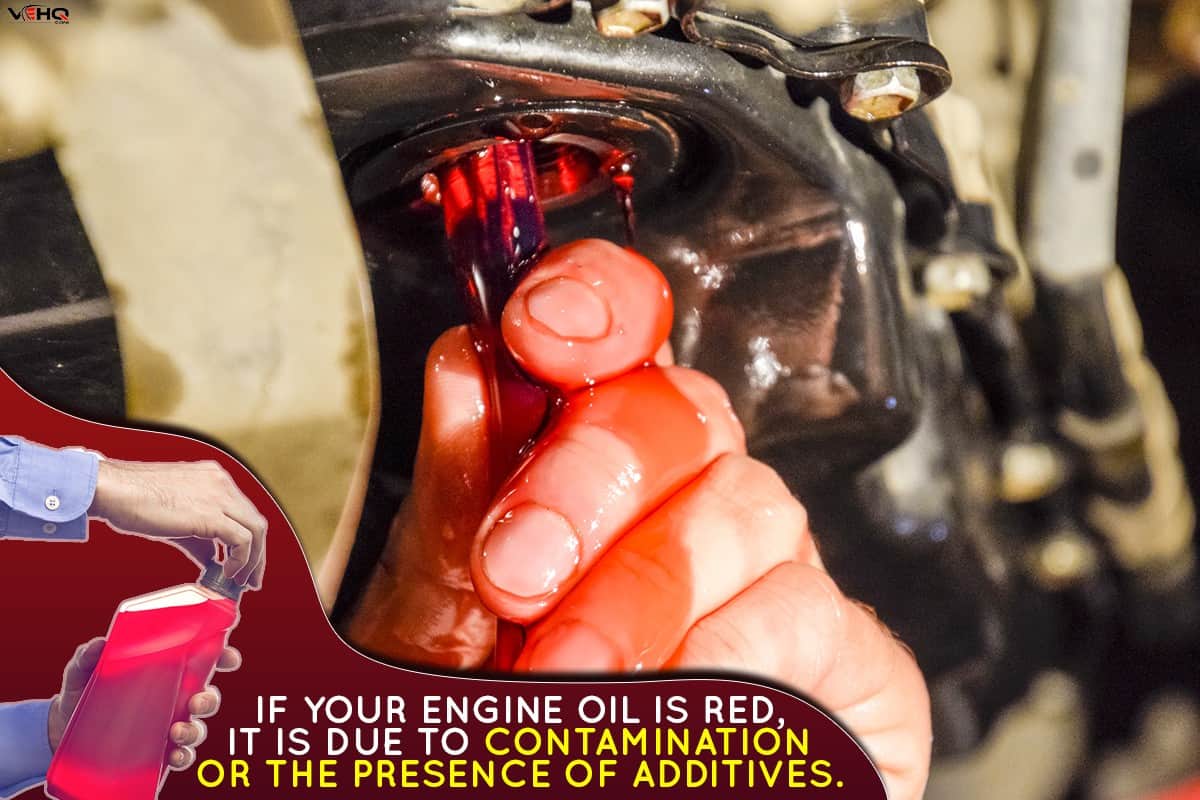
Exploring The Causes Of Red Oil
Red oil isn't necessarily something to panic about. You might be using some additives in your engine that will create some discoloration, turning the oil from amber to red. As long as the oil has the proper consistency, this is a normal occurrence.
But red oil can also indicate that there are some unwanted contaminants present. A cracked manifold or leaking head gasket can allow for other fluids to slowly seep into the engine, making the oil turn red.
If you are not using any additives and notice a red hue about your engine oil, have your engine inspected as soon as possible by a trusted mechanic or your dealership?
Generally, it's the consistency that needs to be weighed in with the color to determine how healthy the engine oil is. The oil should be smooth and free of noticeable gunk.
The carbon buildup that the oil sweeps away from the engine's moving parts will slowly become more noticeable when you check the oil. When you see it, it usually means that you are past due to have the oil changed.
What Different Colors Of Oil Mean
When you first pour new oil into your crankcase, you'll notice that it has a thin, amber color to it. Over time, this color will change, sometimes into ones that mean certain issues need to be addressed.
Here, we've listed the different colors you might notice your oil changing to, as well as how to address each of them.
Black Motor Oil
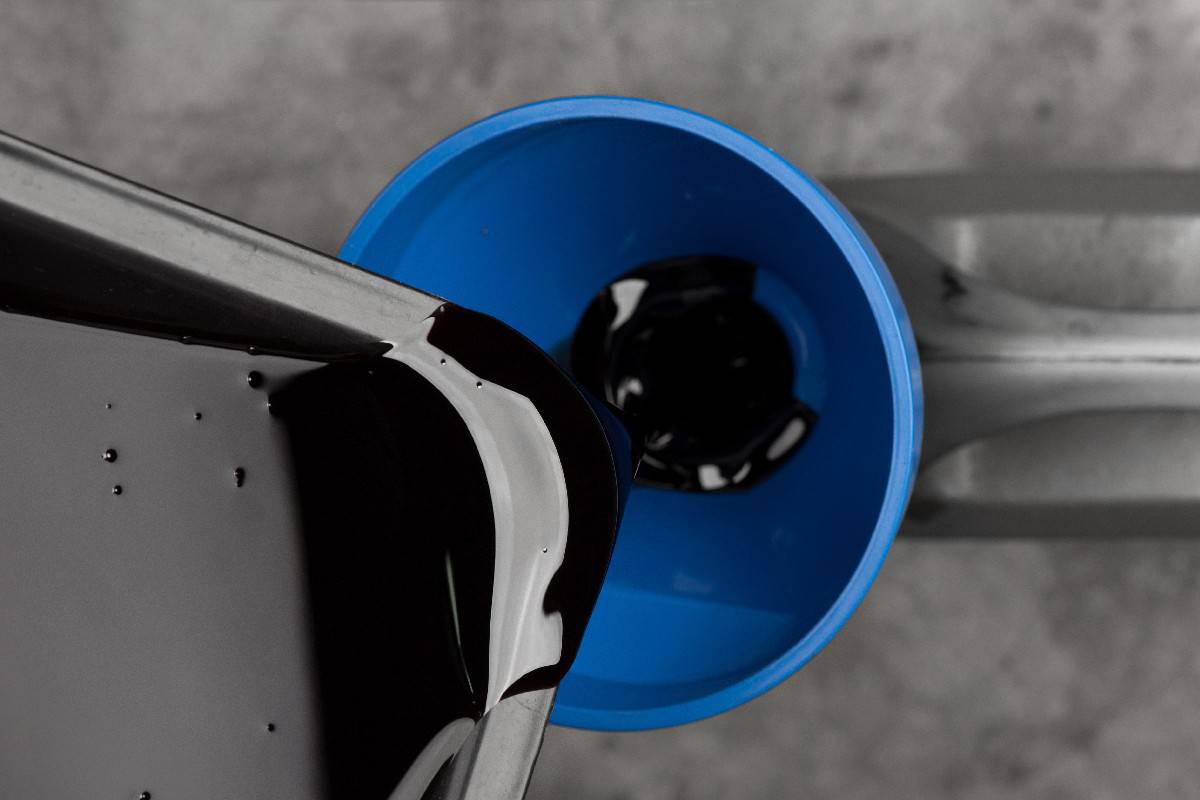
As the oil gets used and ages, it will slowly get darker. When it is black and sludgy, it certainly means that it is well past the time for an oil change.
If you are checking your oil level and see that this vital fluid is dark brown or black, get the oil changed as soon as possible.
Creamy Motor Oil
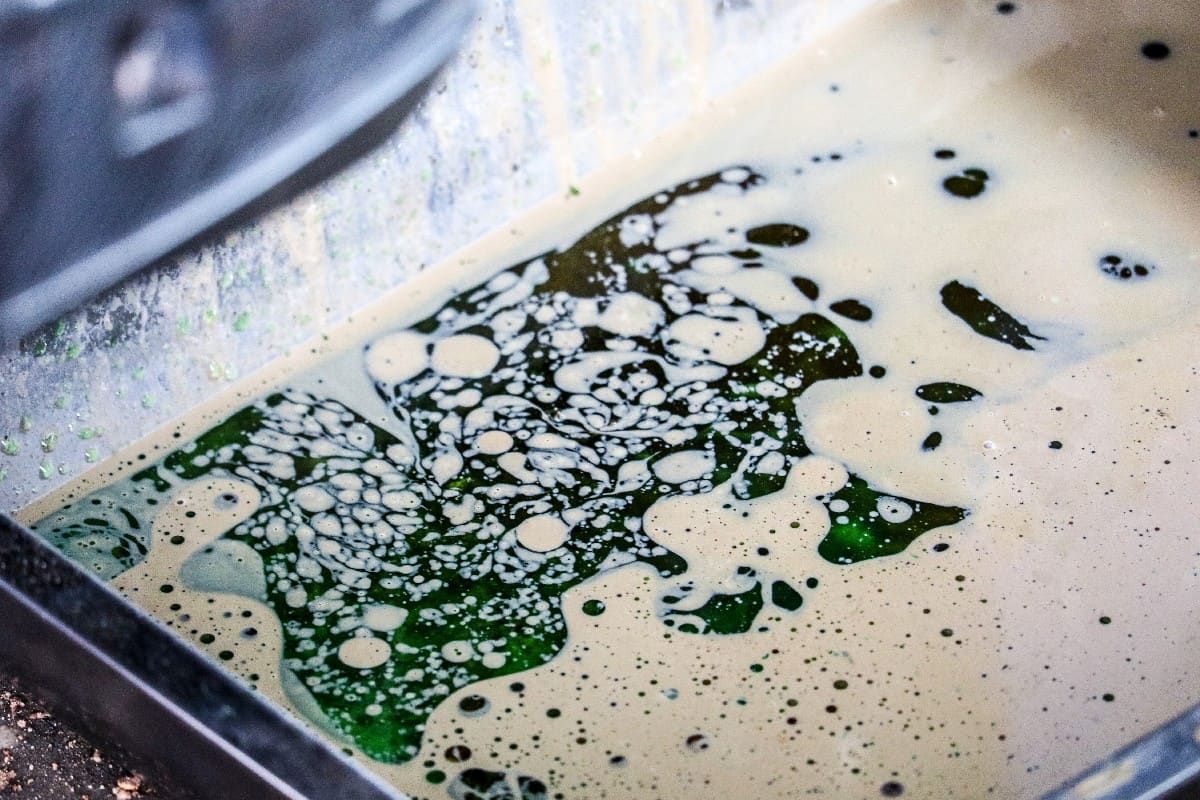
If you see that your motor oil is creamy in appearance, this can indicate that water has found its way into your engine. This can be caused by a leaky head gasket, which can be a costly fix. But more often, the reason behind it will solve itself over time.
Should you drive a lot of short trips, the water vapor that is in your engine will not fully evaporate. The water from the engine coolant needs time and heat for this to happen, and short trips will not allow the engine to heat up fully to make this happen.
If you notice that your oil has this appearance, take a long drive and then check your oil again. If that is the problem, then this will have solved it.
Brown Motor Oil
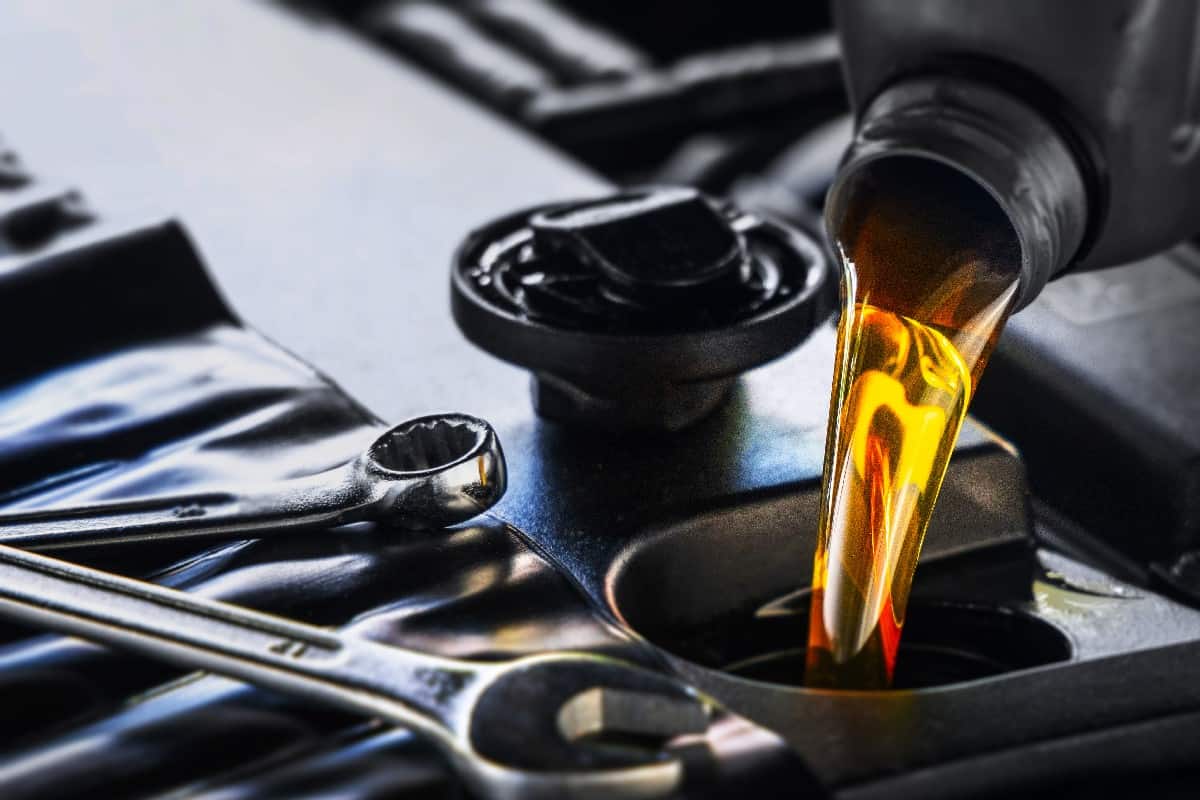
Oil will naturally become darker the longer it is used. So, if you are checking the oil level and see that it is no longer amber, it's not a reason to panic. The brown shade that it might be occurs naturally from its use. It can also become brown due to certain additives that you are using.
As long as the oil is not sludgy, a brown color is not a cause for alarm. Additionally, you'll want to be sure that you have not exceeded the mileage interval from your last oil change.
How Often Should You Change The Engine Oil?
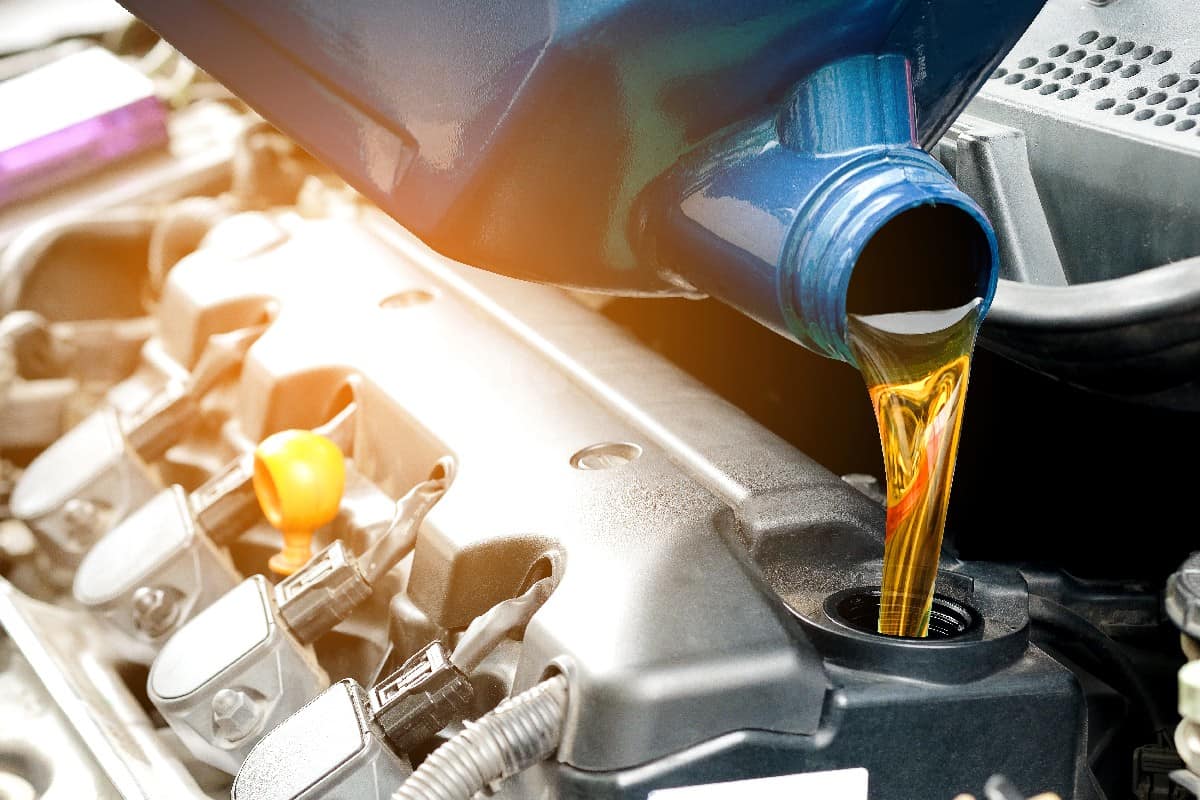
The frequency of oil changes will range from every 3,000 miles to every 10,000 miles. This wide gap is attributed to the type of oil that you are using, the vehicle that you drive, and the age of your engine.
Generally, if you use conventional motor oil, you will need to have it changed every 3,000 to 4,000 miles. But if you are using synthetic oil, this can be done every 7,500 to 10,000 miles.
The older your engine is, the more care it will need. If you have over 150,000 miles on the engine, the oil might need to be changed more frequently.
Additionally, you might consider changing the oil to one with a bit higher viscosity. For more information, consult a trusted mechanic or your dealership about the proper oil to use in your high-mileage engine.
Your owner's manual will specify what type of oil is recommended as well as the frequency at which it needs to be changed. Carefully read this section and follow its recommendations to the letter. This will help you reach those higher mileage milestones with your vehicle.
How Do You Know If Your Engine Oil Is Bad?
Sometimes, we lose track of when we last had even the most important pieces of automotive maintenance performed. Though most dealerships and professional oil change locations will affix a sticker to your windshield to indicate when it needs to be serviced again, these can become detached over time.
The last thing you want is to go beyond the recommended mileage for oil changes. But if you do, there are some telltale signs to watch out for. At the first signs of any of the following, get your vehicle in for service as soon as possible.
Your Check Engine Light Is On
If your oil is low, there will not be enough oil pressure to operate the engine effectively. When the pressure drops to a certain point, it will make your engine light illuminate on your dashboard. This indicates an issue that needs your immediate attention.
Leaks and slow evaporation will cause the oil level to drop a bit over time. This is especially noticeable in older or higher mileage vehicles. The less oil in your engine, the less the oil pressure will be.
If the oil pressure continues to drop, it will create a catastrophic situation that can result in your engine becoming inoperable. Hopefully, you will change the oil out before this occurs. But if this vital piece of routine maintenance has been forgotten, this light will perhaps jar your memory of its importance.
There Is A Knocking Sound Coming From Under The Hood
The primary reason your engine uses motor oil is to lubricate the many moving parts inside of it. But if the oil is too low or too dirty to do so, it can create a situation where metal is rubbing against metal. As you might be able to imagine, this will create some unwanted noises.
If you hear a low knocking or rattling, it can mean that the oil is low. It can also mean that the oil is too contaminated with carbon buildup and other gunk to lubricate and cool the engine fully.
These noises should be taken seriously. If your engine is louder than usual, have it serviced as soon as possible.
The Engine Oil Is Dark
The oil will begin to decay slowly over time. After all, it is made up of some organic material. As the oil ages, it will naturally become darker.
The oil also works to clean the gunk from building up inside the engine. This gunk doesn't just disappear as the oil circulates. Rather, the oil will absorb it. Over time, it will darken the oil and make it thicker.
When you check your oil level, pay close attention to the color. If it is dark, it's probably time for an oil change.
You Notice Smoke Coming From Your Exhaust Pipe
The exhaust from your tailpipe should be barely noticeable. During colder weather, you'll see that it's a thin, gray smoke, but it's otherwise hardly describable when the temperature is nice.
When you notice smoke coming from the exhaust, it usually means trouble in the engine.
Black smoke will almost always mean that oil is burning off somewhere. This can mean there is too much oil in the engine. But it can also indicate that old, thick oil is beginning to leak into the combustion chamber and is now burning off.
Either way, black smoke means that your vehicle needs to be tended to as soon as possible.
There Is A Smell Of Oil Inside Your Vehicle

The cabin of your vehicle should never smell burnt oil. If you ever notice this smell, it most likely means that there is oil leaking somewhere and is being burned off by the heat of the engine or the exhaust.
This smell not only means that your vehicle needs servicing but also is a warning sign that your health is in jeopardy. The fumes from burning oil can be toxic, so be sure to get any smells checked out immediately.
Final Thoughts

The color of your engine oil can be an indicator of the health of this vital fluid. Paying close attention to this detail can be an important part of prolonging the life of your engine as well as ensuring its performance.
Change the oil according to the intervals outlined in your owner's manual so that your vehicle will be running its best on the road for years to come. Drive safe!
Before you go, be sure to take a look at these guides:
